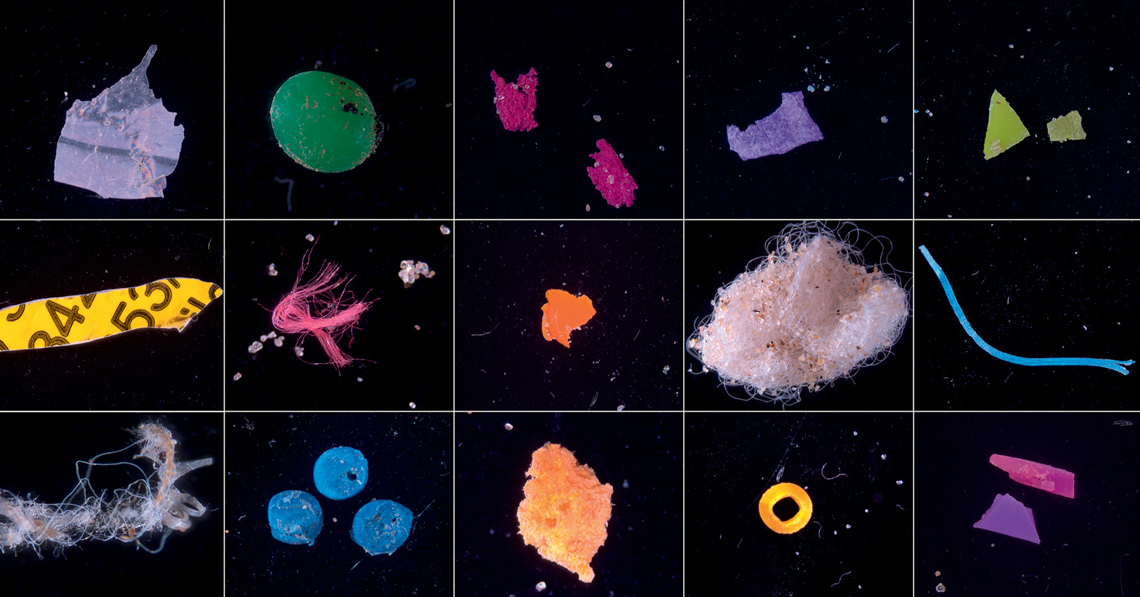Research on the impacts of microplastics on human health is still in its infancy. In one of the first studies in the field, a team from the Pathology Department of the School of Medicine at the University of São Paulo (FM-USP) detected microplastics in human lungs, as described in a 2021 article in Journal of Hazardous Materials (see Pesquisa FAPESP issue nº 305). “Microplastics are in the air and it is inevitable that they are inhaled. We saw that they reach the lungs, but we still need to determine the health impact,” says pathologist Thais Mauad, who led the study.
According to Mauad, studies using cultures that simulate human tissues indicate that plastic fragments cause cellular damage and can cause inflammation, but it is not yet possible to quantify the number of particles needed to cause serious damage or to determine the impact of absorbing the chemical additives present in the plastics.
In a January 2021 article in Environment International, Italian scientists from Marche Polytechnic University in Ancona reported that microplastics had been found in the placenta of pregnant women. Despite acknowledging that the effects were unknown, the group warned of the risk of fetus malformation and the need for further studies. In May 2022, researchers at Vrije Universiteit Amsterdam in the Netherlands revealed that 77% of the country’s blood donors carried high amounts of plastic particles in their blood.
In a more recent study described in Environmental Science & Technology in July, a medical team from Anzhen Hospital in Beijing, China, found microplastics in human hearts for the first time. The doctors evaluated the heart muscles of 15 patients who were undergoing surgical interventions and found nine different types of plastic in five different cardiac tissue types.
The United Nations Environmental Program (UNEP) estimates that humans produce around 460 million tons of plastic per year, a figure that could potentially triple by 2060. Much of the plastic waste ends up in the sea — Brazil alone releases 3.44 million tons of plastic waste off its coast every year (see Pesquisa FAPESP issue nº 321). According to experts consulted by Pesquisa FAPESP, the problem needs a global solution. For now, despite being considered merely remedial, adopting the so-called 3Rs of sustainability — reduce, reuse, and recycle — would be a good first step. Attention is focused on the Global Treaty on Plastic Pollution, for which the United Nations (UN) intends to gain the support of 175 countries by the end of 2024.
Projects
1. Identification and physical and chemical characterization of environmental microplastics in the atmosphere and in human lung tissue (nº 19/03397-5); Grant Mechanism Postdoctoral Fellowship; Supervisor Thais Mauad (USP); Beneficiary Luís Fernando Amato Lourenço; Investment R$254,097.97.
2. Airborne microplastics: Detection in ambient air samples and lung tissue and the effects on cultured pulmonary epithelial cells (nº 19/02898-0); Grant Mechanism Regular Research Grant; Principal Investigator Thais Mauad (USP); Investment R$40,949.36.
Scientific articles
AMATO-LOURENÇO, L. F. et al.Presence of airborne microplastics in human lung tissue. Journal of Hazardous Materials. vol. 416. aug. 2021.
RAGUSE, A. et al.Plasticenta: First evidence of microplastics in human placenta. Environment International. vol. 146. jan. 2021.
LESLIE, A. et al.Discovery and quantification of plastic particle pollution in human blood. Environment International. vol. 163. may 2022.
YANG, Y. et al.Detection of various microplastics in patients undergoing cardiac surgery. Environmental Science & Technology. july 13, 2023.


